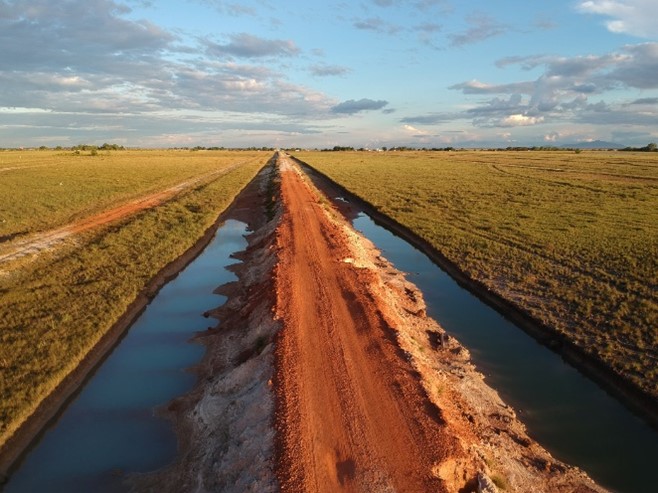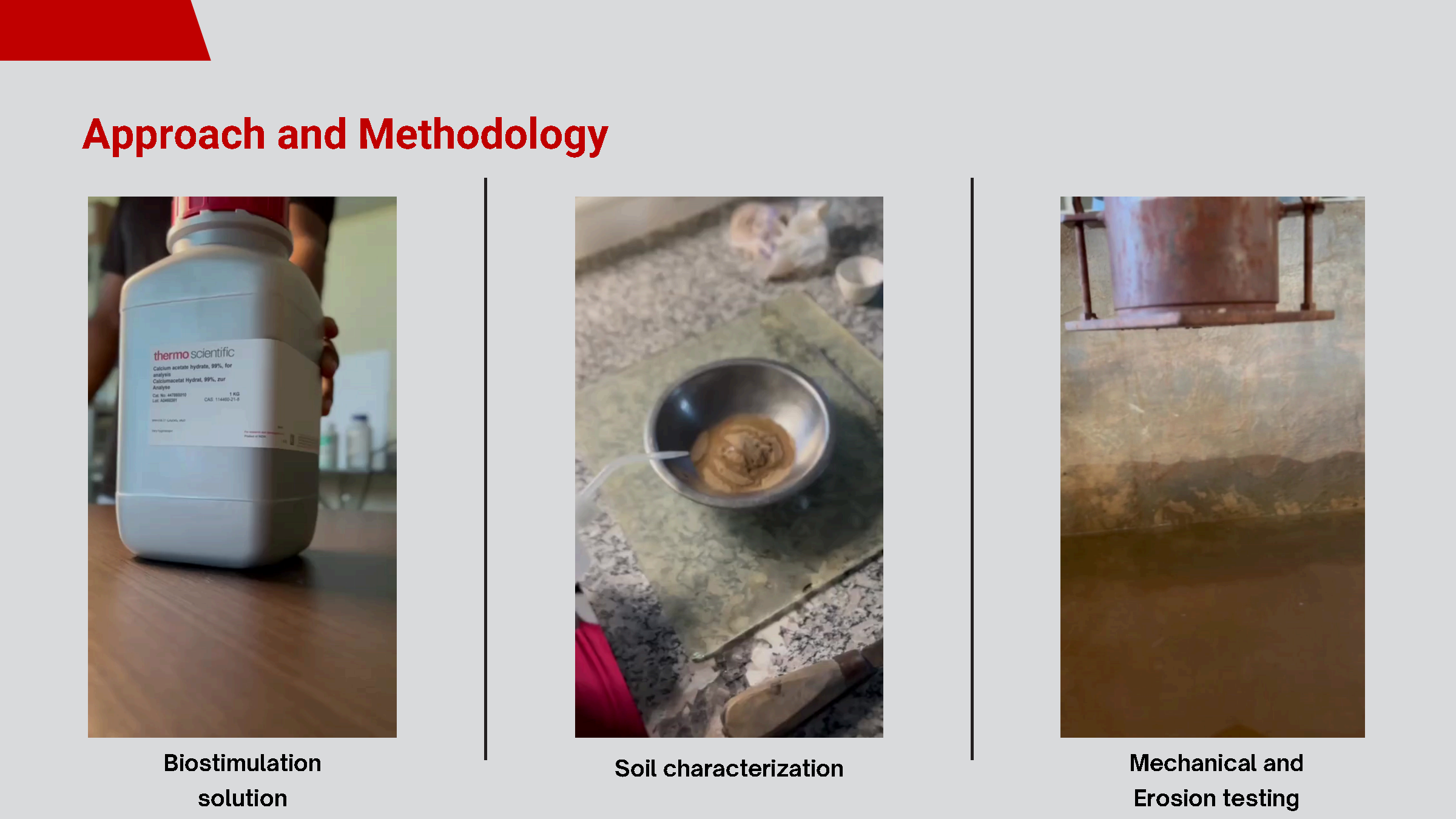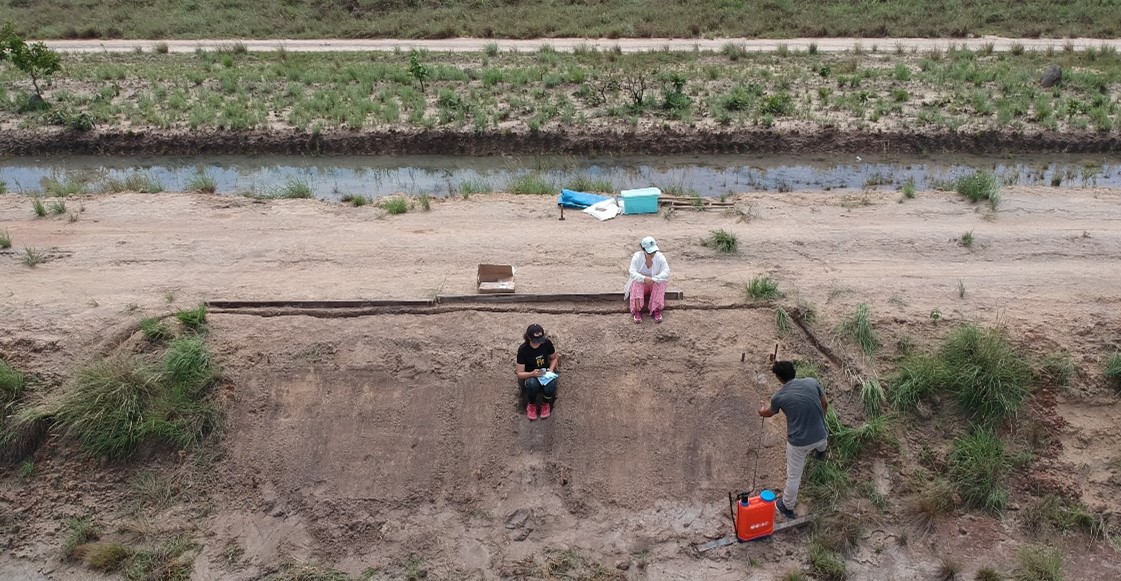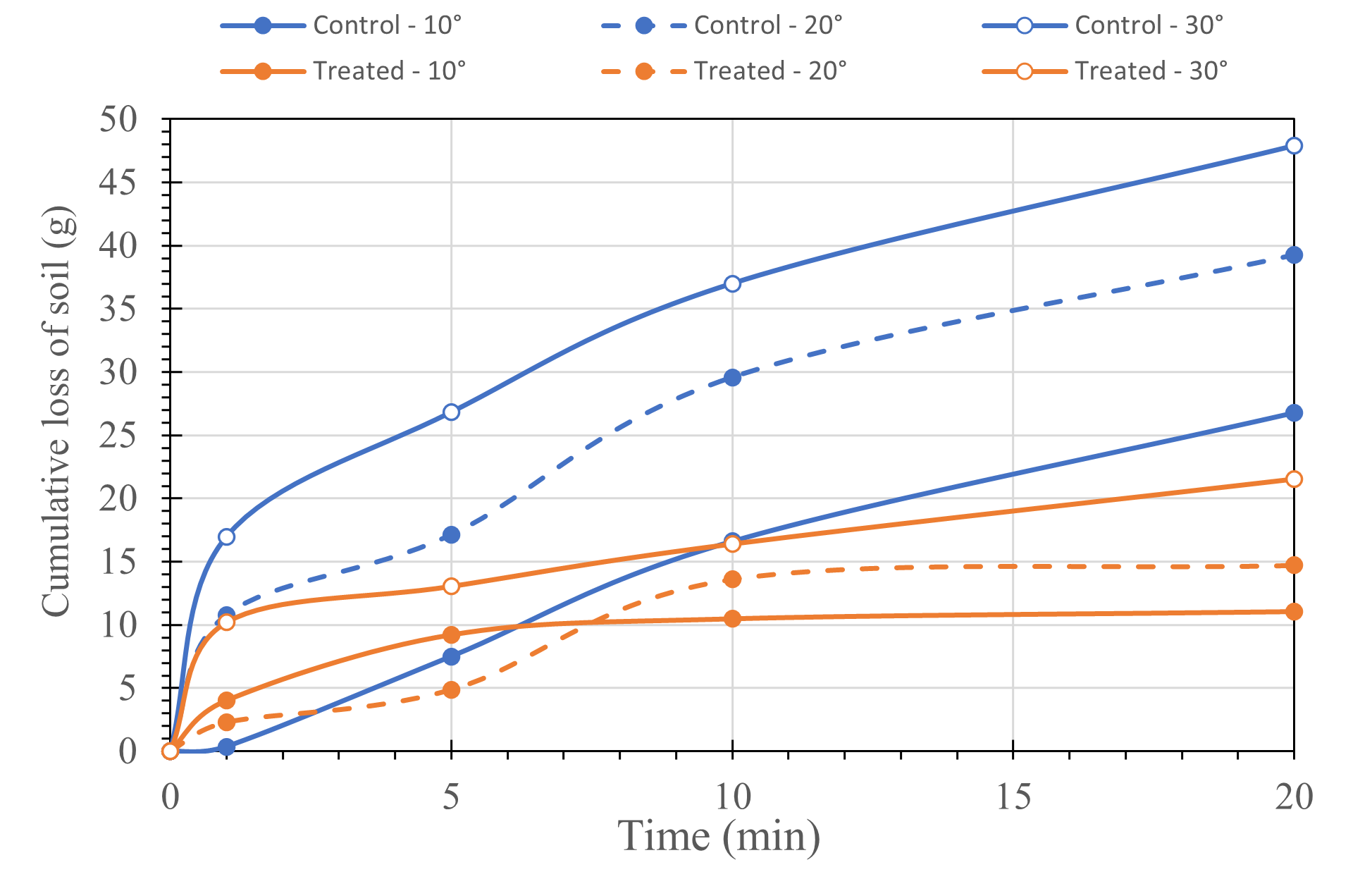Enhancing Road Resilience and CO2 Capture through Bio-Stimulated Soil Stabilisation
Introduction
As climate change intensifies, the resilience of infrastructure, particularly roads, becomes increasingly critical. In Brazil, the road network is essential for transportation, with approximately 65% of the supply chain and 95% of passenger movement relying on roads (IBGE, 2014). However, a staggering 86% of Brazil’s 1,720,909 km road network remains unpaved, posing significant challenges (CNT, 2022; DNIT, 2022). In regions like Roraima, accessing quality aggregates for road construction is difficult due to environmental protections and high transportation costs (Moizinho, 2007). This blog explores an innovative solution to these challenges: bio-stimulated microbial induced calcium carbonate precipitation (MICP) for soil stabilisation.
The Problem with Traditional Methods
Traditional soil stabilisation methods, such as chemical stabilisation with cement, lime, or fly ash, are effective but come with significant drawbacks. These methods are costly, energy-intensive, and environmentally harmful due to greenhouse gas emissions. The cement industry alone is responsible for 7-10% of global carbon dioxide emissions (Rocha et al., 2022). Moreover, transporting quality aggregates over long distances adds to the environmental impact and cost.

Erosion on the slopes of an embankment along an unpaved road in Roraima – Brazil.
The NATURE Project
The CDRI-funded NATURE (Nature-based solutions To Unpaved Roads Engineering) research project aims to address these challenges by exploring bio-stimulated MICP as a sustainable alternative for soil stabilisation. MICP leverages natural biogeochemical processes to improve soil properties, control erosion, and enhance road durability. This project not only aims to improve soil strength but also contributes to CO2 sequestration, thus mitigating climate change impacts (Bu et al., 2022; Dejong et al., 2013).
How MICP Works
MICP involves stimulating soil bacteria to produce calcium carbonate, which binds soil particles together, enhancing their strength and stability. Various biogeochemical processes can induce calcium carbonate precipitation, such as urea hydrolysis, denitrification, and ammonification (Osinubi et al., 2020). Among these, urea hydrolysis is the most widely used despite producing ammonium, a toxic by-product that needs remediation (Van Paassen, 2009). Our approach, however, is different as it does not produce toxic by-products, on the contrary, it consumes atmospheric CO2, contributing to climate change mitigation.
Research Methodology
The project involves several key lab and field activities:
Soil Characterization: Sand soil samples from an unpaved road test site were characterized to establish baseline properties. Tests included particle size distribution, specific gravity, Atterberg limits, and compaction.
Microbial Enrichment Protocols: The team developed and optimised protocols for stimulating MICP bacteria, aiming to enhance calcium carbonate production.

Mechanical Testing: California Bearing Ratio (CBR) and unconfined compressive strength tests were conducted on both untreated and bio-stimulated soil samples to assess load-bearing capacity.
Erosion Testing: Inderbitzen tests evaluated the soil’s resistance to erosion.
Field Implementation: A section of the road embankment in Boa Vista, Brazil, was treated with bio-stimulated MICP, and its performance will be monitored over time.

Treatment of a section of the embankment slope.
Erosion Test Results: Promising Findings
The erosion test results from our research have shown particularly exciting outcomes. When comparing the cumulative loss of soil over time, bio-stimulated samples performed remarkably better than control samples across all ramp inclinations (10°, 20°, and 30°). This clearly demonstrates that the bio-stimulated treatment is highly effective in reducing soil erosion.

Cumulative loss of soil over time for bio-stimulated treated and control samples.
But that's not all—the rate of soil loss for bio-stimulated samples is significantly lower than that of control samples. This means that bio-stimulated soil has a much better resistance to erosion. Essentially, the treatment helps keep the soil in place, even under conditions that typically cause severe erosion. To put it in numbers, the erodibility rate is reduced by approximately 69% with the bio-stimulated treatment.
These findings are very promising, indicating that bio-stimulated treatment can substantially improve soil resistance to erosion. This not only helps in maintaining road stability but also contributes to reducing maintenance costs and improving safety. The enhanced resistance to erosion means that roads treated with bio-stimulated solution are likely to last longer and perform better, even in challenging weather conditions.
Field Implementation
To translate these findings into practical applications, a section of the road embankment in Boa Vista, Brazil, was treated with bio-stimulated MICP. Drone images document the treated area and the research team’s efforts. The ongoing field monitoring will provide valuable data to evaluate the long-term effectiveness of the bio-stimulated MICP treatment.
Environmental and Economic Benefits
The NATURE project not only aims to enhance road resilience but also offers significant environmental and economic benefits. By using locally available materials and reducing the need for chemical stabilisers, the project minimizes environmental impact and costs. Moreover, the CO2 sequestration potential of MICP contributes to climate change mitigation, making it a sustainable solution for soil stabilisation (Renforth et al., 2011; Washbourne et al., 2012).
In Summary
The NATURE project represents a significant step forward in sustainable infrastructure development. By leveraging natural biogeochemical processes, this research offers a promising alternative to traditional soil stabilisation methods. The findings so far indicate that bio-stimulated MICP can significantly enhance soil properties and road durability, particularly in erosion-prone regions. Additionally, the ability of MICP to sequester CO2 contributes to climate change mitigation by capturing atmospheric carbon dioxide and converting it into stable mineral forms within the soil. As the project progresses, it will provide valuable insights and practical solutions for improving the stability and sustainability of unpaved roads while also addressing environmental concerns through CO2 sequestration.
Special Acknowledgments
A heartfelt appreciation to our incredible team of research students—Isabelle César, Victor Cavalcanti, Victor Ramos, Rian Victor, Francis Rangel, Paulo Wilton, and Erika Morais! Your dedication, hard work, and brilliant contributions have been instrumental in making this project a success. Thank you for your passion and commitment to advancing sustainable infrastructure!
References
- Bu, C., Lu, X., Zhu, D., Liu, L., Sun, Y., Wu, Q., Zhang, W., & Wei, Q. (2022). Soil improvement by microbially induced calcite precipitation (MICP): a review about mineralization mechanism, factors, and soil properties. Arabian Journal of Geosciences, 15(9). https://doi.org/10.1007/s12517-022-10012-w
- CNT - Confederação Nacional do Transporte. (2022). Anuário CNT do Transporte 2022. https://anuariodotransporte.cnt.org.br/2022/Inicial
- da Rocha, C. G., Saldanha, R. B., Tonini de Araújo, M., & Consoli, N. C. (2022). Social and environmental assessments of Eco-friendly Pavement alternatives. Construction and Building Materials, 325(February), 126736. https://doi.org/10.1016/j.conbuildmat.2022.126736
- Dejong, J. T., Soga, K., Kavazanjian, E., Burns, S., Van Paassen, L. A., AL Qabany, A., Aydilek, A., Bang, S. S., Burbank, M., Caslake, L. F., Chen, C. Y., Cheng, X., Chu, J., Ciurli, S., Esnault-Filet, A., Fauriel, S., Hamdan, N., Hata, T., Inagaki, Y., … Weaver, T. (2013). Biogeochemical processes and geotechnical applications: Progress, opportunities and challenges. Geotechnique, 63(4), 287–301. https://doi.org/10.1680/geot.SIP13.P.017
- DNIT - Departamento Nacional de Infraestrutura e Transporte. (2022). National Road System – SNV. https://www.gov.br/dnit/pt-br/assuntos/atlas-e-mapas/pnv-e-snv
- IBGE. (2014). IBGE mapeia a infraestrutura dos transportes no Brasil. https://agenciadenoticias.ibge.gov.br/agencia-sala-de-imprensa/2013-agencia-de-noticias/releases/14707-asi-ibge-mapeia-a-infraestrutura-dos-transportes-no-brasil
- Moizinho, J. C. (2007). Caraterização e Uso de Agregados Lateríticos do Distrito Federal e do Estado de Roraima em CBUQ. UnB - Universidade de Brasília.
- Osinubi, K. J., Eberemu, A. O., Ijimdiya, T. S., Yakubu, S. E., Gadzama, E. W., Sani, J. E., & Yohanna, P. (2020). Review of the use of microorganisms in geotechnical engineering applications. SN Applied Sciences, 2(2). https://doi.org/10.1007/s42452-020-1974-2
- Renforth, P., Washbourne, C. L., Taylder, J., & Manning, D. A. C. (2011). Silicate production and availability for mineral carbonation. Environmental Science and Technology, 45(6), 2035–2041. https://doi.org/10.1021/es103241w
- Van Paassen, L. (2009). Biogrout Ground Improvement by Microbially Induced Carbonate Precipitation. Technische Universiteit Delft.
- Washbourne, C. L., Renforth, P., & Manning, D. A. C. (2012). Investigating carbonate formation in urban soils as a method for capture and storage of atmospheric carbon. Science of the Total Environment, 431, 166–175. https://doi.org/10.1016/j.scitotenv.2012.05.037
By Dr Mariana Chrusciak and Dr Bruna Lopes, CDRI Fellows 2023-24, Universidade Federal de Roraima, Brazil
The views and opinions expressed in this blog are those of the authors and do not necessarily reflect those of the Coalition for Disaster Resilient Infrastructure (CDRI).




